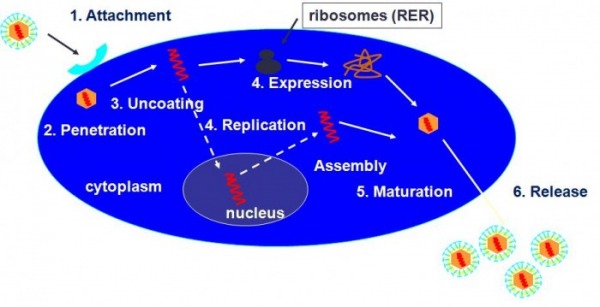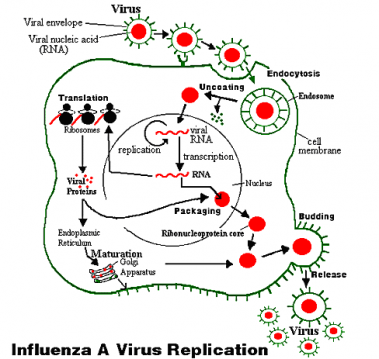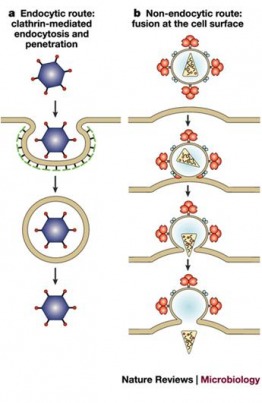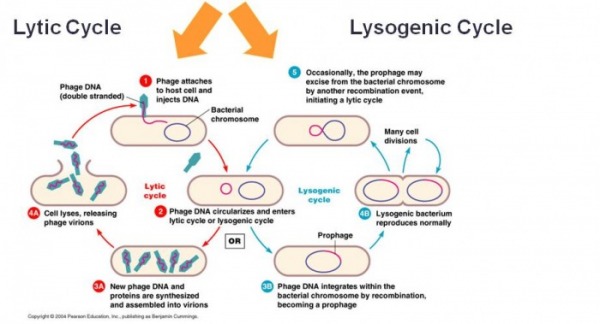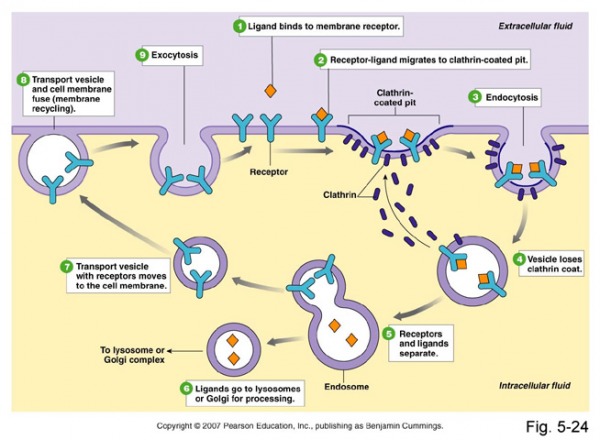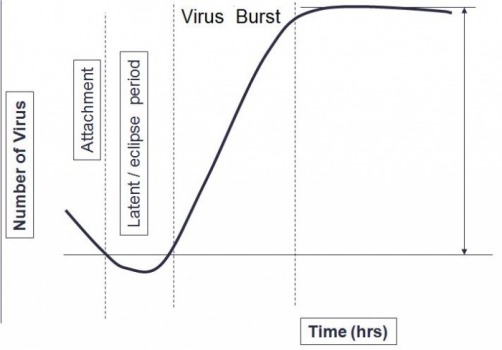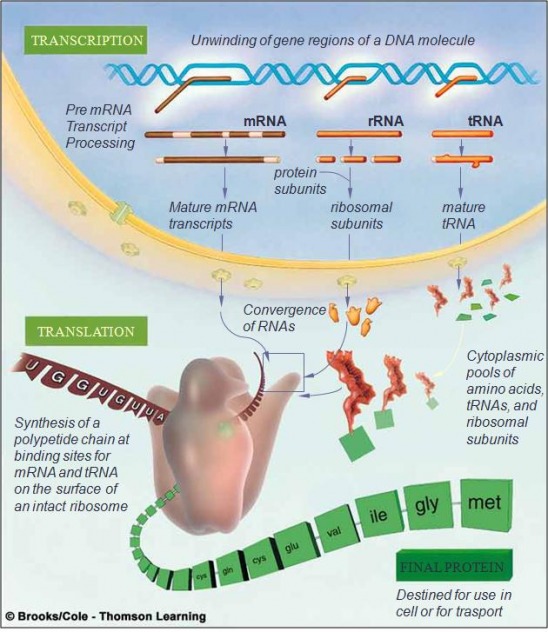Virology
Viral Replication
Viruses cannot reproduce themselves because they have neither the genes for all the enzymes necessary for replication nor functional ribosomes for protein synthesis. Instead, viruses are dependent on their host's organelles enzymes to produce new virions. Once a host cell falls under control of a viral genome, it is forced to replicate viral genetic material and translate new proteins, including viral capsomeres and viral enzymes.
General Virus Replication Cycle
http://www.goalfinder.com/preview/viruspreview.html
General Virus Replication Cycle
1.Attachment
- Attachment happens when the attachment sites on the virus caspid specifically binds to the receptor on the host cell.
- The attachment sites on the virus are typically proteins.
- However, the receptor on the host cells may be either protein, glycoprotein or glycolipid.
An example would be:
- The HIV virus which infects only the human T cells
- Its surface protein is the gp120
- This surface protein only interacts with the CD4+ receptors on the T cell's surface
2.Penetration
- Penetration is the next step after the attachment of the virus.
- The viruses enter the host cells through the receptor via endocytosis or memberane fusion.
- This step may also be called viral entry.
- The penetration of viruses in plant and animals differ greatly.
- This is mainly due to the cell wall the plant cells has (it is made of cellulose).
- Many new kinds of penetration methods have been adapted by viruses to infect plants.
4.Replication and Expression
Replication involves the synthesis of the vurial mRNA (except for the (+) sense RNA viruses). The assemble of the viral proteins and viral genome replication is involved in this stage.
3.Uncoating
Uncoating involves the sepreation of the nucleic acid of the virus from its protein coat.
There are 2 possible ways for this to take place.
There are 2 possible ways for this to take place.
- The host lysozymes degrades the capsid protein, or
- The action of the viral enzyme
6. Release
There are 2 typical ways virus releases itself from the cell after replication.
- Enveloped virus : the release of virion is via budding; lipid envelope around the capsid
- Non-enveloped virus : the release of virion is via membrane rupture
5.Maturation
Maturation involves the assemble of the viral capsid and prepares the virus for its release.
Two Types of Replication Cycle
There are two types of replication cycle.They are :
1. Lytic Cycle
2. Lysogenic Cycle
1. Lytic Cycle
2. Lysogenic Cycle
What is Lytic Cycle?
Paragraph.
What is Lysogenic Cycle?
Paragraph.
Receptor-mediated Endocytosis
Receptor-mediated endocytosis (RME), also called clathrin-dependent endocytosis, is a process by which cells internalize molecules (endocytosis) by the inward budding of plasma membrane vesicles containing proteins with receptor sites specific to the molecules being internalized.
An Example of Receptor-Mediated Endocytosis
This video demonstrates receptor-mediated endocytosis through the uptake of cholesterol by cells.
The difference between Virus budding and Cell rupture
Cell rupture
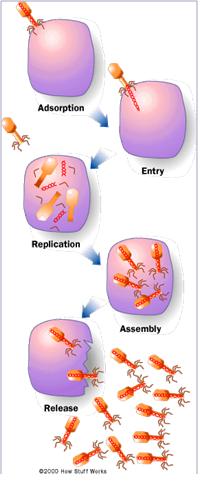
- Naked viruses are released from the infected cell by disruptionof the plasma membrane.
- As infection proceeded, aggregates of virusmigrated towards the cell periphery, resulting in cell membranerupture near the virus aggregate with the subsequent releaseof the virus aggregates.
Virus budding
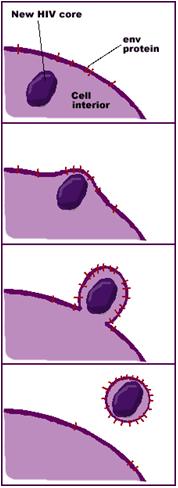
- Enveloped viruses contain a host cell-derivedlipid bilayer, which surrounds the nucleocapsid or core and which is acquired during budding .
- Virus detachment from cell is usually described as a pinching-off step.
- This requires local curvature of the membrane to form a bud, followed by formationa neck (or lipid stalk) and then by fission.
Virus Life Cycle : Growth Curve
The stages of Virus Growth Curve
- Attachment
- Latent/eclipse period
- Virus Burst
What happened during the stages??
1. Attachment
Entry of Viruses into the host cells
2. Eclipse/Latent stage
Fall in virus titre when no infectious particles present during replication process
Virus cannot be detected in external medium until released
3. Virus Burst
New progeny virus assembled and released
Entry of Viruses into the host cells
2. Eclipse/Latent stage
Fall in virus titre when no infectious particles present during replication process
Virus cannot be detected in external medium until released
3. Virus Burst
New progeny virus assembled and released
